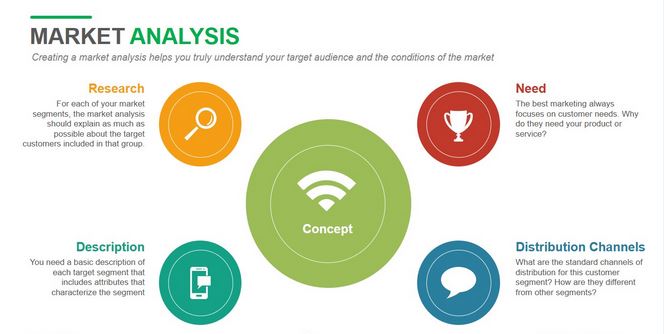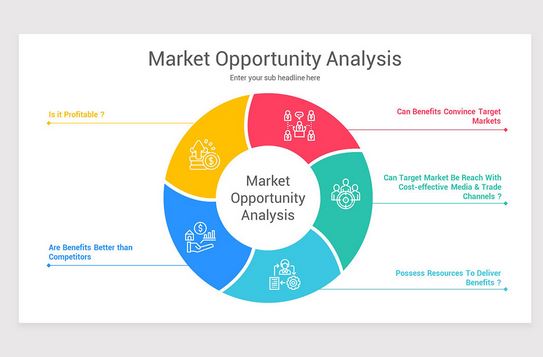Introduction
In the fast-paced world of business, understanding your market analysis template is crucial. Whether you’re launching a new product or looking to expand your existing services, having a clear insight into your target audience and competitors can make all the difference. A well-structured market analysis template serves as your roadmap in this journey. It not only helps you gather essential data but also allows you to interpret that information effectively.
Imagine walking into a room packed with opportunities each potential client, each competitor, and every trend waiting to be uncovered. With the right tools at hand, you can navigate through this crowded space confidently. So, let’s dive deep into crafting an effective market analysis template that will empower you to seize those opportunities and drive your business forward.
Understanding Market Analysis and its Importance
Market analysis is a critical tool for businesses aiming to thrive in competitive landscapes. It involves assessing various market dynamics, consumer behavior, and industry trends. By understanding these elements, companies can make informed decisions about their strategies.
The importance of a thorough market analysis cannot be overstated. It helps identify opportunities for growth while pinpointing potential risks. Knowing your target audience allows you to tailor products and marketing efforts effectively.
Additionally, market analysis serves as the backbone of strategic planning. Businesses equipped with robust insights can allocate resources wisely and enhance operational efficiency. This proactive approach minimizes uncertainty and sets the stage for long-term success.
In essence, diving deep into market research fosters innovation by revealing unmet needs within the marketplace. Adapting quickly based on analytical findings enables companies to stay ahead of competitors while meeting customer expectations seamlessly.
Key Components of a Market Analysis Template
A market analysis template is a powerful tool that guides businesses in understanding their environment. It provides clarity and structure, ensuring no critical element gets overlooked.
First, it should start with an executive summary. This section offers a snapshot of key findings and insights, making it easy for stakeholders to grasp essential information at a glance.
Next comes the target market description. Clearly define your ideal customers. Include demographics like age, gender, income level, and geographic location.
Competitive analysis is another vital component. List competitors and evaluate their strengths and weaknesses compared to yours.
Market trends follow this assessment. Discuss current industry developments that could impact your business strategy.
Include potential barriers to entry or challenges you might face in the market landscape. Identifying these risks early allows for more effective planning down the line.

Step-by-Step Guide to Crafting an Effective Market Analysis Template
Start by defining your objective. What specific market insights do you need? Knowing this will guide the entire analysis.
Next, gather relevant data. Use both primary and secondary sources. Surveys, interviews, and published research can provide valuable information.
Once you have your data, create sections for each key component of the template. This could include target demographics, market trends, competitive landscape, and SWOT analysis.
Design your layout for clarity. A clean structure with headings helps readers navigate easily through the information.
After structuring your template, fill it in with concise yet informative content. Aim for bullet points or tables where possible to enhance readability.
Review and refine your draft based on feedback from colleagues or stakeholders to ensure accuracy and effectiveness before finalizing it as a usable tool.
Examples of Successful Market Analysis Templates
When exploring successful market analysis templates, it’s essential to look at real-world applications. For instance, a tech startup might utilize a template that focuses on competitive landscape and customer segmentation. This approach allows them to identify unmet needs in their niche.
Another example can be found within the retail sector. A well-crafted template here could emphasize seasonal trends and consumer behavior analytics. Retailers benefit from understanding what products resonate during specific times of the year.
Nonprofits often adopt templates that prioritize community impact and stakeholder insights. These tools help track effectiveness and guide future initiatives based on thorough data analysis.
Each of these examples demonstrates how tailoring your market analysis template to fit industry-specific needs can yield powerful insights, fostering informed decisions for growth and strategy development.
Common Mistakes to Avoid in Market Analysis
One common mistake in market analysis is relying solely on outdated data. Always use the most current statistics to inform your decisions. Markets change rapidly, and old information can lead you astray.
Another pitfall is failing to define your target audience clearly. Without a specific focus, you’ll struggle to understand their needs and preferences. Narrowing down demographics will enhance the relevance of your analysis.
Ignoring competitors can also be detrimental. It’s essential to identify what others are doing well or poorly in your industry. This insight helps position your business more effectively.
Many overlook the importance of actionable insights. Analyzing data without translating it into strategies leaves you with information but no direction for implementation. Ensure that each finding leads to clear next steps for your organization’s growth strategy.
Conclusion:
Creating an effective market analysis template is not just about gathering data. It’s about understanding your industry, competitors, and customer needs. A well-structured template serves as a roadmap for strategic decisions that can significantly impact your business’s success.
By focusing on key components like target audience, competitive landscape, and market trends, you equip yourself with valuable insights. Following the step-by-step guide ensures that you cover all necessary aspects while avoiding common pitfalls in analysis.
Whether you’re a startup or an established business, having a robust market analysis template is essential. It fosters clarity and direction in your planning efforts. As you continue to refine this tool over time, remember that adaptability is crucial markets change rapidly.

1 Comment
fkmby5